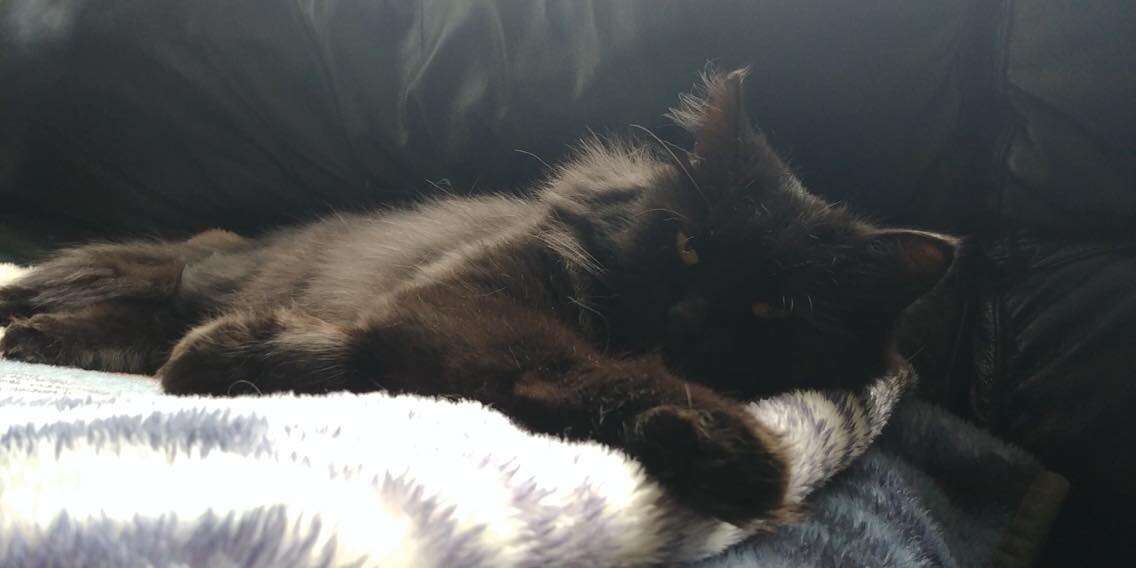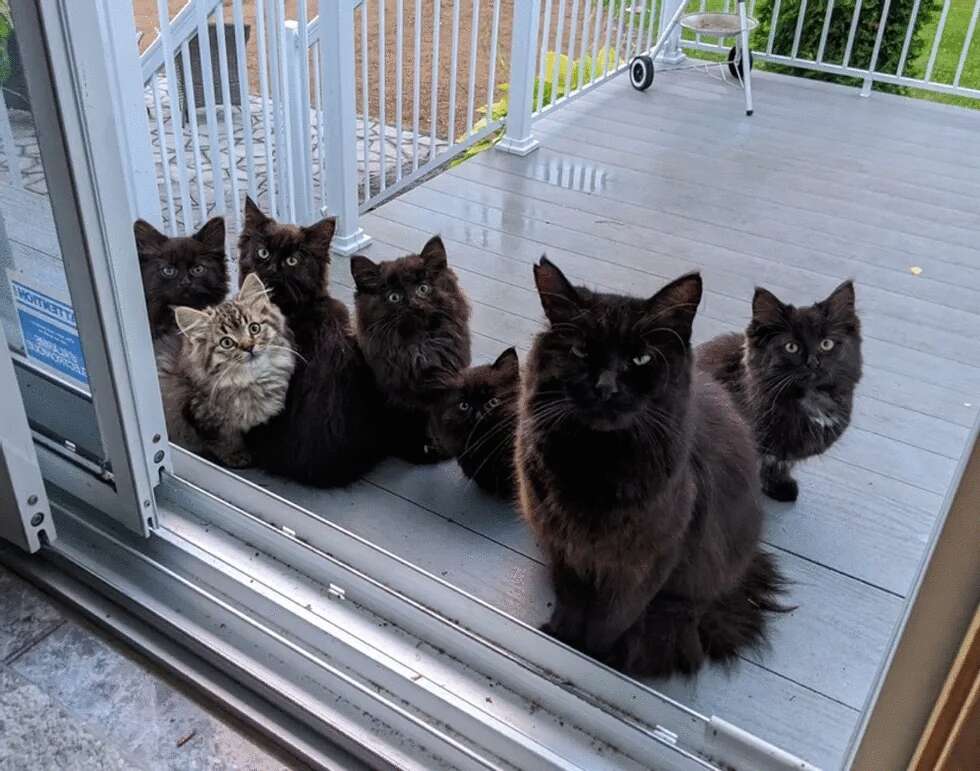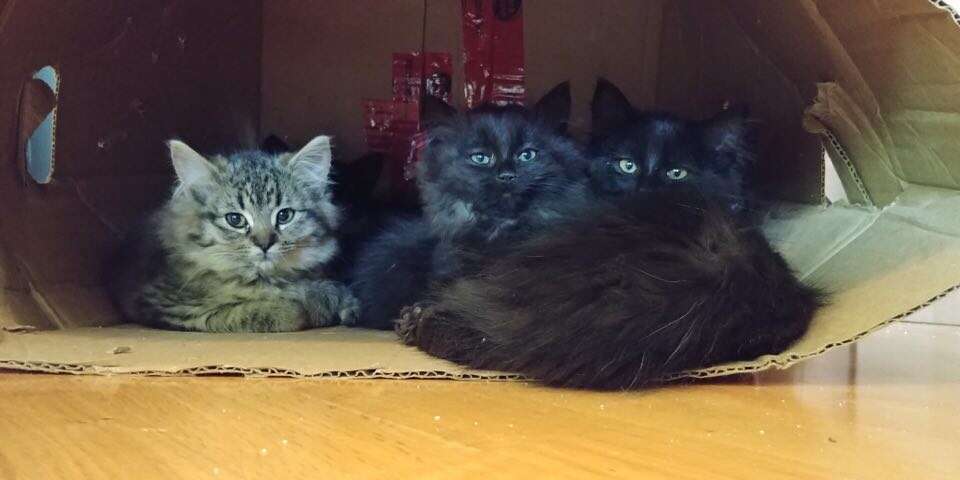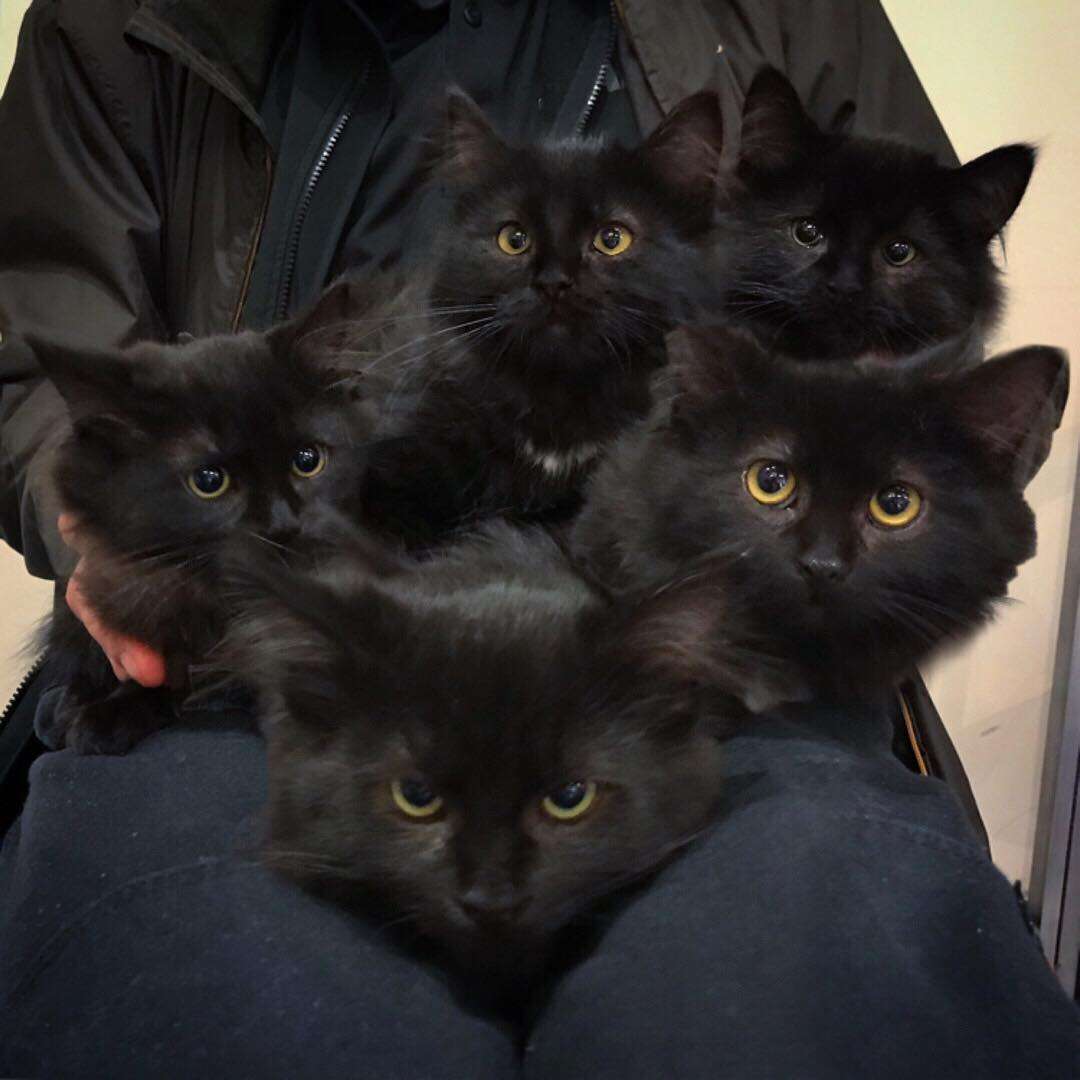Stray Cat Brings All Her Babies To Meet The Woman Who Helped Her
On a sunny summer day, Lisianne noticed a fluffy black cat roaming near her yard in Québec, Canada. The cat was part of a stray colony in the vicinity and appeared hungry. Lisianne, compassionate and kind-hearted, set out a bowl of food and water to alleviate the cat’s hunger.
From that moment, a bond formed between Lisianne and the cat, whom she affectionately named Usagi. As the days passed, Usagi grew more trusting of Lisianne. However, Lisianne soon noticed something peculiar – Usagi’s belly was expanding, but it wasn’t due to her newfound diet.

“Through this daily routine, the lady gained Usagi’s confidence, and the kitty started drawing nearer,” shared Chatons Orphelins Montréal, a local rescue group, on Facebook. “Usagi gave birth outside but returned every day to eat.”
As time went by, Usagi decided it was time to introduce Lisianne to her precious little family. One by one, she brought out her six adorable kittens, lining them up on Lisianne’s porch. At just 6 weeks old, the kittens resembled miniature versions of their caring mother, and it was evident that the entire family needed assistance.

Lisianne warmly coaxed the mom and her kittens into her home and promptly reached out to the rescue group, Chatons Orphelins Montréal. “The mom and her six babies were finally safe,” the rescue group stated. “[Lisianne] decided to keep the mom, had her treated and spayed, and one of her friends offered to care for one of the kittens.”

At the shelter, it became apparent that Usagi had sought help just in time. Some of the remaining kittens were struggling with conjunctivitis and breathing difficulties. Thankfully, the veterinarian promptly treated them, and their health showed swift improvement. As they recovered, they gradually became more comfortable around humans.

“The kittens were initially reserved, in need of socialization,” explained Chatons Orphelins Montréal. “But soon, they began to trust and come out of their shells. The little ones are now enjoying their playtime together.”
With their caring mother taking a chance and seeking help, the remaining five kittens are now prepared to find their forever homes. Thanks to the compassionate intervention of Lisianne and the dedicated rescue group, these kittens will have the opportunity to lead comfortable and loving lives.
6 Most Common Cat Health Problems
Cats are good at self-maintenance. But even your fastidious feline can't prevent some of these more common cat diseases and health issues.
1. Vomiting
Vomiting is a very common problem with cats with a multitude of causes. They range from eating something poisonous or inedible (like string), to infection, urinary tract disease, or diabetes to hairballs.
Symptoms are usually obvious, and include drooling and abdominal heaving. Vomiting can quickly leave your cat dehydrated, so if kitty continues vomiting or acts ill, call your vet right away. It may help to collect a sample of your cat's vomit and take it with you to the vet.
2. Feline Lower Urinary Tract Diseases (FLUTD)
Some estimates say as many as 3% of cats seen by vets have feline lower urinary tract disease ( FLUTD), which is actually a group of feline diseases with multiple causes.
Female and male cats can get FLUTD, and it often occurs in cats that are overweight or unfit or who eat dry food. Stress, a multi-cat household, and sudden changes can all raise a cat's risk of FLUTD, and treatment depends on the type of FLUTD your cat has.
FLUTD symptoms include:
- Straining to urinate
- Bloody urine
- Urinating in unusual places
- Crying when urinating
- Licking around the urinary area (often because of pain)
- Depression
- Dehydration
- Lack of appetite
- Vomiting
It's always an emergency if your cat can't urinate. Call your vet immediately if you suspect your cat has a urinary tract problem.
3. Fleas
Fleas are a very common external feline health problem. But it's one you can easily treat. Signs your cat has fleas include:
- Flea dirt on its skin (they look like tiny black dots)
- Constant scratching
- Frequent licking
- Red or irritated skin
- Hair loss
- Skin infections or hot spots
Fleas can live for more than a year, and your cat risks anemia if the problem becomes serious, so be sure to treat your cat's flea problem and prevent future infestations.
Talk to your vet about which flea control would be best for your cat. Treatments include oral medication, powders, foams, and topical medication. Fleas are uncommon in Utah. If you adopt a pet from a region outside of Utah or are housing a pet that recently came from another state, please be aware of fleas.
4. Tapeworms
One of the most common feline health problems inside your cat, tapeworms live in kitty's small intestine and sometimes grow as long as 2 feet.
Symptoms of a tapeworm infection can be subtle but may include vomiting and weight loss. The easiest way to tell if your cat has tapeworms is to look at its feces and around its anus. If you see small white worms or what look like grains of rice or sesame seeds, your cat likely has tapeworms.
Treatment options include injection, oral, or topical medication. But because cats almost always get tapeworms as a result of swallowing a flea, be sure to handle any flea problems your cat has before tackling tapeworms.
5. Diarrhea
Many things can cause diarrhea in cats, including spoiled food, allergies, infection, liver disease, cancer, and more.
Symptoms of diarrhea are loose, watery, or liquid stool. Depending on its cause, diarrhea can last for a day, a week, or months.
If your cat has diarrhea, offer kitty plenty of fresh, clean water to prevent dehydration. Then remove kitty's food for no more than 12 to 24 hours. Take your cat to the vet if he or she still has diarrhea after a day or immediately if you notice vomiting, dark, or bloody stools, fever, lethargy, or loss of appetite or if your cat is straining to defecate.
6. Eye Problems
Eye problems in cats can be caused by a number of things, including conjunctivitis, cataracts, glaucoma, trauma, viruses, inflammation, and retinal disease.
A few symptoms that may mean your cat has eye problems include watery eyes, tear-stained fur, cloudiness, red or white eyelid linings, gunk in the corners of the eye, squinting, pawing at the eye, or a visible third eyelid.
Unless you know what's causing your cat's eye problems, there isn't much you can do other than wipe away any gunk with a damp cotton ball. After that, call your vet.




GIPHY App Key not set. Please check settings